An organization’s reputation is one of its most valuable assets. A single breach caused by an overlooked server, misconfigured cloud storage, or forgotten web domain can lead to data leaks, customer distrust, and negative media coverage. Businesses continue moving to cloud environments, adopting remote work models, and connecting with multiple third-party services. These changes create more potential entry points for attackers, making full visibility into those points more important than ever. Attack surface management vendors step in to address this challenge. They provide solutions that discover, monitor, and secure all external-facing assets that attackers could exploit.
What is Attack Surface Management and Why Do You Need It?
Attack Surface Management takes a proactive approach to cybersecurity. It identifies, catalogs, and monitors every internet-facing asset in an organization’s digital environment. Unlike traditional vulnerability management, ASM adopts an outside-in perspective, viewing infrastructure as an attacker would.
Top 14 Attack Surface Management Vendors
1. Intruder
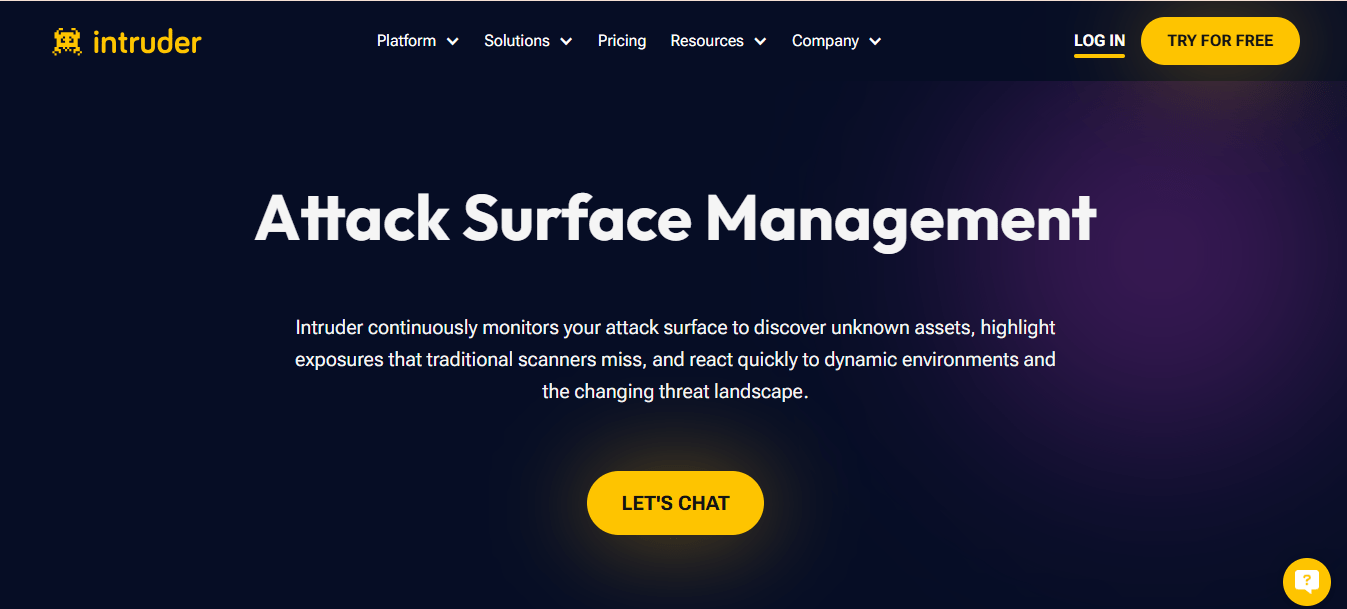
Intruder is an external attack surface management (EASM) tool that actively monitors your digital perimeter. It discovers unknown assets, identifies exposures that other scanners miss, and alerts you to emerging threats as they appear. Intruder helps mid-market businesses keep their attack surface secure even as the threat landscape evolves. The tool works easily with major cloud providers AWS, GCP, Cloudflare, and Azure so it can automatically scan newly deployed cloud services without manual intervention.
Features
- Discovers external-facing assets such as subdomains, login pages, APIs, and exposed services
- Provides full visibility and search functionality across ports, services, and technologies
- Uses multiple scanners to detect attack surface issues for more comprehensive coverage
Pros
- Easy setup: Customers can quickly configure and deploy the tool with minimal effort
- Detailed reporting: Clear, actionable reports simplify attack surface management
- Responsive support: Users often praise the platform’s fast and knowledgeable support team
Cons
- License restrictions: Users cannot reassign spare licenses for 30 days after activation, which creates flexibility issues
- Configuration challenges: Some users report difficulties with API authentication, limitations with multi-factor authentication, and missing features
Pricing
- Essential: $99 / month
- Cloud: $180 / month
- Pro: $240 / month.
2. Detectify
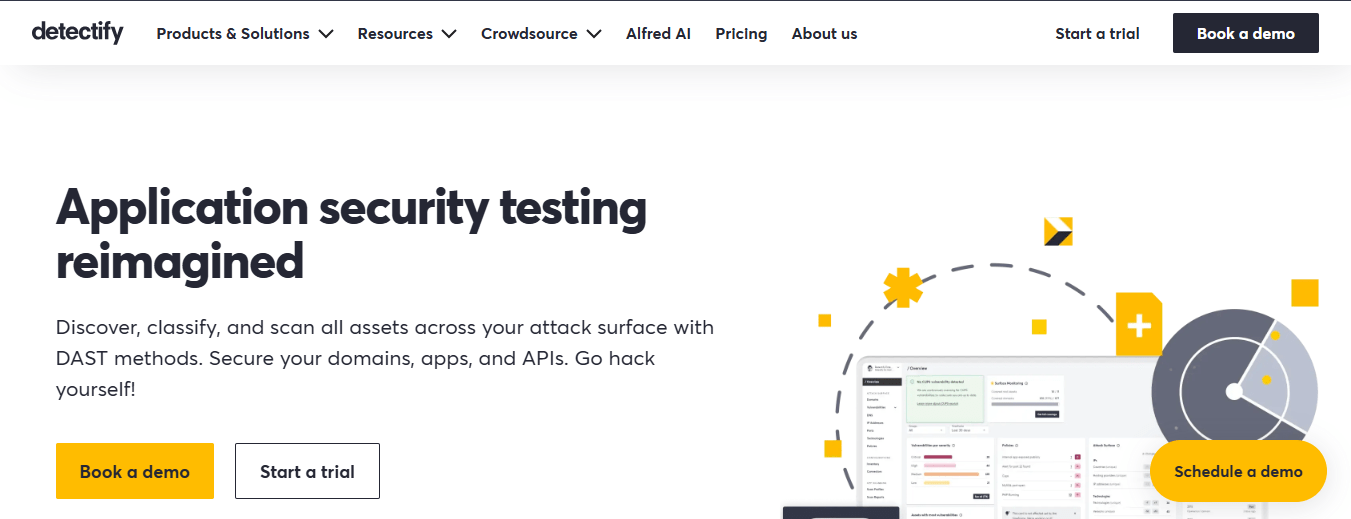
Detectify is an attack surface management solution and application scanning tool. It enables businesses to discover their internet-facing subdomains and address vulnerabilities in web applications and APIs. Detectify relies on a community of ethical hackers to identify vulnerabilities in commonly used technologies. This crowdsourced research provides detailed security insights and helps organizations respond to potential threats more effectively.
Features
- Asset discovery for attack surface protection: identifies subdomains and internet-facing assets
- Crowdsourced vulnerability detection: uses ethical hacker findings to uncover risks
- Web application security coverage: monitors applications and APIs for weaknesses
- Continuous monitoring: detects new risks as they appear
- Actionable remediation tips: provides clear guidance for fixing issues
- Integrations: connects with other security tools for seamless workflow
- Customizable scans and reports: allows users to create targeted security assessments
Pros
- Strong automations: users can easily create custom scans and reports to match their needs
- Effective discovery: accurately finds unknown accounts and vulnerabilities with minimal false positives
- Detailed reporting: users appreciate the ability to generate rich, customized, and easy-to-read reports
Cons
- High cost: users report that the platform is expensive and the pricing structure can be confusing
- Complex setup: may overwhelm new or non-technical users and is better suited for technical teams
- Limited transparency: some users feel the platform could offer more clarity in its processes
Pricing
- €302 per month for up to 25 subdomains
3. Qualys
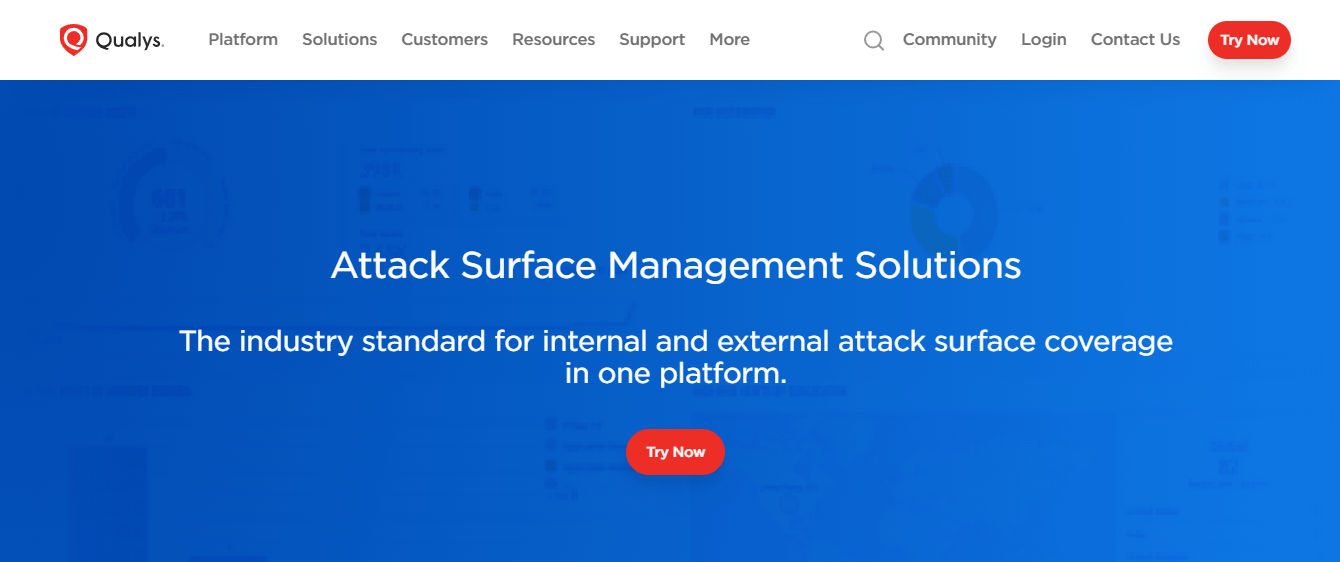
Qualys External Attack Surface Management (ASM) is a cloud-based solution that discovers and continuously monitors digital assets. It helps organizations secure their external digital footprints by actively identifying forgotten or overlooked assets. The platform integrates with other security solutions to give enterprises visibility across their entire attack surface, including assets from mergers, acquisitions, and subsidiaries. It automatically identifies exploitable issues, allowing security teams to prioritize and reduce risk more effectively.
Features
- Continuously discovers internet-facing assets
- Provides detailed reporting and dashboards for better visibility
- Integrates with Qualys’ Vulnerability Management, Detection, and Response (VMDR) solution
Pros
- Scales well for enterprises of different sizes
- Integrates smoothly with other security tools
Cons
- High cost compared to some competitors
- User interface can be difficult to navigate
- Limited capabilities for direct remediation
Pricing
Contact for pricing.
4. Rapid7
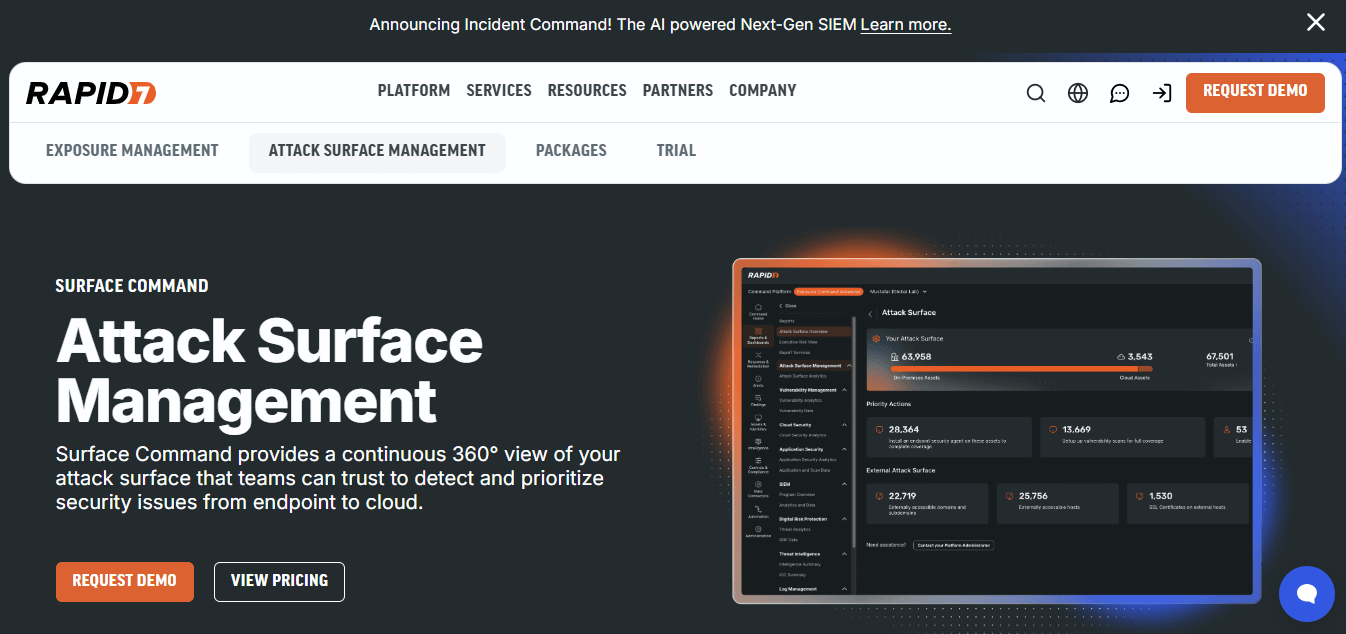
Rapid7’s Attack Surface Management tool actively identifies potential external threats and digital exposures. It combines real-time threat intelligence with automated scanning to help organizations find, prioritize, and address risks. The tool excels at asset discovery and risk prioritization but falls short when it comes to integrated remediation. Its companion product, InsightVM, demands significant resources and lacks comprehensive reporting and customization options.
Features
- External Threat Intelligence: Collects and analyzes threat data from multiple sources to help security teams take proactive action.
- Automated Asset Discovery: Detects new digital assets to ensure no asset remains overlooked.
- Risk Scoring: Assigns a severity score to each vulnerability, enabling teams to focus on the most critical issues first.
- Remediation Guidance: Offers step-by-step recommendations for addressing identified vulnerabilities.
Pros
- Provides strong real-time visibility into threats.
- Enables clear prioritization of security risks.
Cons
- Consumes significant system resources.
- Offers limited dashboard visibility and customization options.
5. Tenable
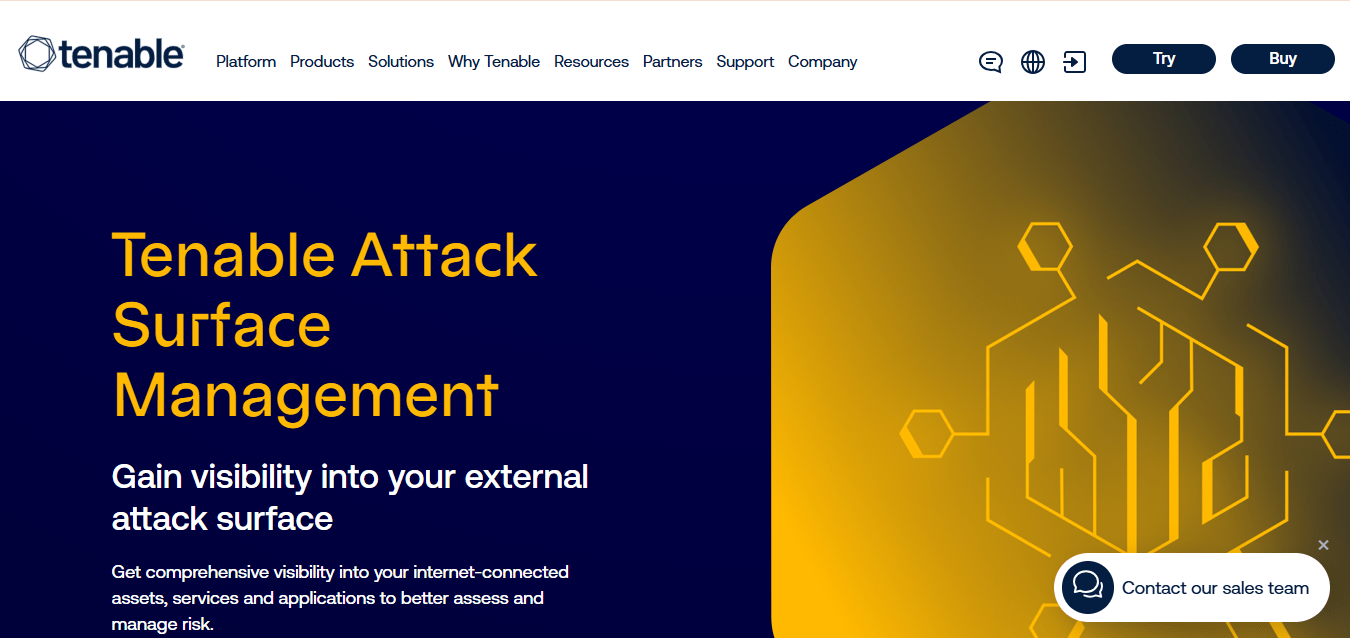
Tenable discovers external assets, identifies subdomains, and scans containers while performing traditional vulnerability assessments. It integrates with Nessus for in-depth analysis and consolidates unidentified or misconfigured endpoints in one interface. This process matches newly discovered assets with known CVEs, allowing security teams to patch issues promptly. Beyond the standard ASM capabilities, Tenable One includes additional security tools such as web application scanning, operational technology (OT) security, and limited privileged access management features.
Features
- Detects new assets as soon as they appear, minimizing the risk of unmonitored exposures.
- Risk-Based Prioritization: Assigns each vulnerability a risk score based on its potential business impact.
- Detailed Reporting and Metrics: Generates actionable reports that help security teams improve their defenses.
- Integration with Tenable Solutions: Works seamlessly with Nessus and other Tenable products for a unified view.
Pros
- Comprehensive Visibility: Quickly identifies both known and unknown assets across the organization for proactive defense.
- Strong Vulnerability Detection: Supports broad compatibility and offers thorough dashboards for analysis.
- Customizable Reporting: Provides flexible, detailed reports to meet various organizational needs.
Cons
- Complex Deployment: Users often report challenges during the initial setup and cite limited integration options.
- Less Intuitive UI: The interface can feel cluttered and less user-friendly compared to other ASM solutions.
6. CyCognito
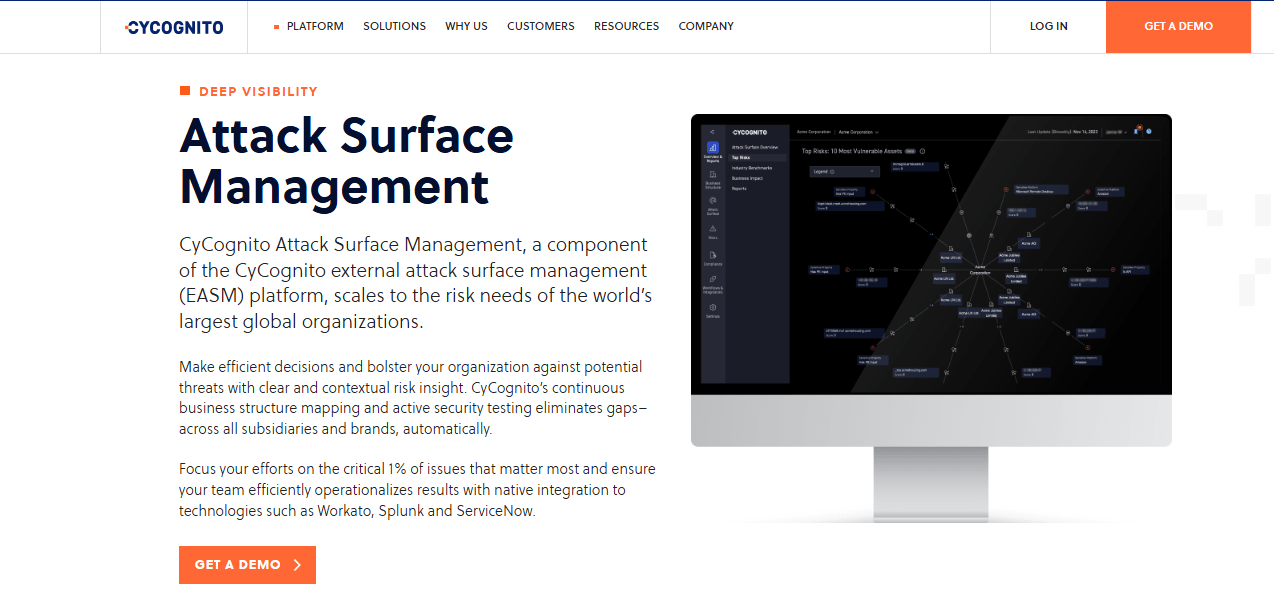
CyCognito identifies hidden attack paths by modeling adversary tactics, techniques, and procedures. It builds a complete view of your attack surface, including assets that traditional security tools often miss. Its technology manages your external security posture by finding, ranking, and eliminating risks. CyCognito also reveals a company’s entire digital footprint, including unknown and shadow IT assets.
Features
- Shadow IT Discovery: Automatically detects hidden or unmanaged assets connected to the network but lacking proper security.
- Attack Simulation: Runs simulated attacks to uncover exploitable weaknesses and offer realistic insights into vulnerabilities.
- Prioritization and Risk Scoring: Assigns impact-based scores to vulnerabilities, helping organizations decide which issues to fix first.
Pros
- Complete attack surface visibility
- Automated detection and monitoring
- Real-time threat intelligence
- Clear risk prioritization
- Easy-to-use interface
- Supports compliance efforts
Cons
- May generate false positives
- Focuses only on external threats
- Requires regular vulnerability database updates for accuracy
Pricing
Contact CyCognito for pricing details.
7. Crowdstrike
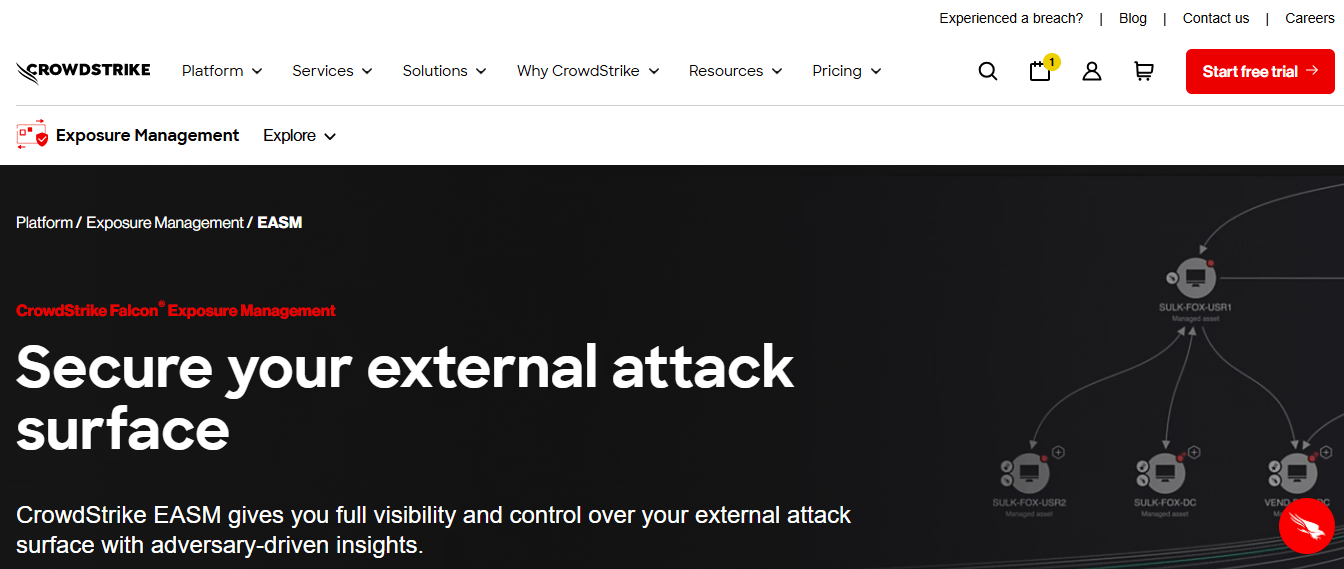
CrowdStrike Falcon Surface actively uses threat intelligence to reveal potential vulnerabilities and risks. It shows a discovery path map that visualizes how assets connect to the organization, making it easier to find orphaned or poorly managed assets. This cloud-based solution gives businesses a full view of their attack surface, including on-premises, cloud, and hybrid environments. Its integration with the Falcon platform makes it a strong choice for companies already using CrowdStrike products.
Features
- Real-time visibility of external-facing assets
- Advanced threat detection and response
- Integration with CrowdStrike’s endpoint protection platform
Pros
- Uses cloud and AI technology for risk detection
- Provides precise threat detection
- Supports multiple devices and operating systems
- Generates custom reports
- Delivers accurate identification of risks
Cons
- Can be expensive for small and mid-sized businesses
- Requires fast internet because of its cloud-based nature
- Interface may be challenging for beginners.
Pricing
- Falcon Go: $59.99/device
- Falcon pro: $99.99/device
- CrowdStrike Falcon Enterprise: $184.99/device.
8. Mandiant
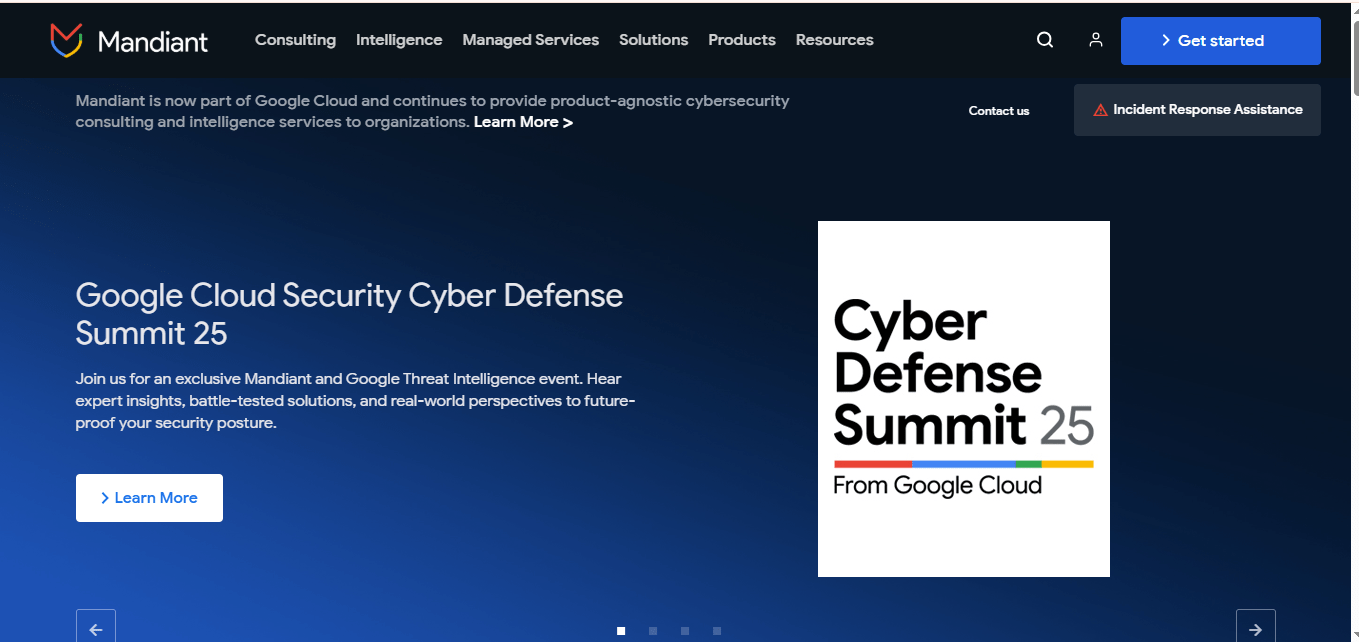
Mandiant Advantage gives organizations a clear view of their external attack surface, including shared environments such as supply chain ecosystems and subsidiary portfolios. The solution actively discovers digital assets, identifies the technologies running on them, detects vulnerabilities, and provides detailed technical information on each issue. Mandiant’s attack surface management (ASM) solution helps organizations find and manage external assets and vulnerabilities while delivering insights to strengthen their cybersecurity defenses.
Features
- Continuous attack surface discovery and monitoring
- Threat intelligence integration
- Detailed risk analysis
Pros
- Accurate indicators of compromise (IOCs)
- Easy API integration
- Deep understanding of vulnerabilities
- High-quality threat intelligence
- Fast reporting of zero-day vulnerabilities
Cons
- Requires frequent feed adjustments based on threat profiling
- Support team response can be slow
- Implementation and system architecture can feel complex.
9. Microsoft Defender
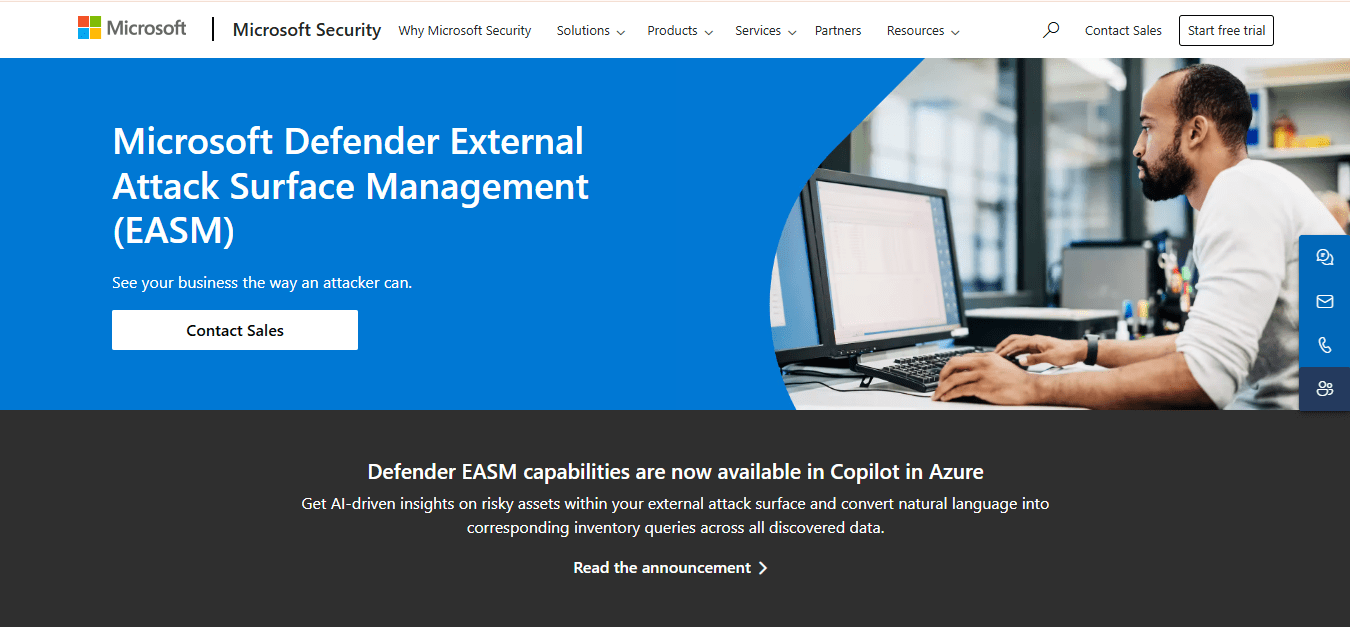
Microsoft Defender ASM helps organizations identify and protect their external digital assets. It actively scans public-facing endpoints, uncovers forgotten or unknown assets, and reduces potential attack vectors. The solution minimizes the attack surface across Windows and Azure environments by continuously discovering assets such as domains, IP blocks, and email contacts. This external perspective gives security teams a clear understanding of their online infrastructure.
Features
- Asset Discovery: Continuously scans for unmanaged or unknown assets and identifies digital properties exposed to the internet.
- Integrated Threat Intelligence: Flags risks for discovered assets using Microsoft’s threat intelligence network, enabling proactive mitigation.
- Automated Remediation: Delivers remediation recommendations for vulnerabilities on external-facing assets, helping security teams act quickly.
- Seamless Integration: Works with other Microsoft security solutions to provide a unified cybersecurity experience.
Pros
- Actively reduces external attack surfaces and helps organizations stay ahead of potential threats.
- Automates asset discovery, generating actionable items for InfoSec and infrastructure teams.
- Offers a multicloud view combined with threat intelligence for broader protection.
- Provides protection and smooth integration with other Microsoft security tools.
Cons
- Limited functionality outside of the Microsoft ecosystem.
- Users report challenges with customization and a complex interface.
- May generate false positives, requiring manual verification and occasional intervention when automation fails.
10. FireMon
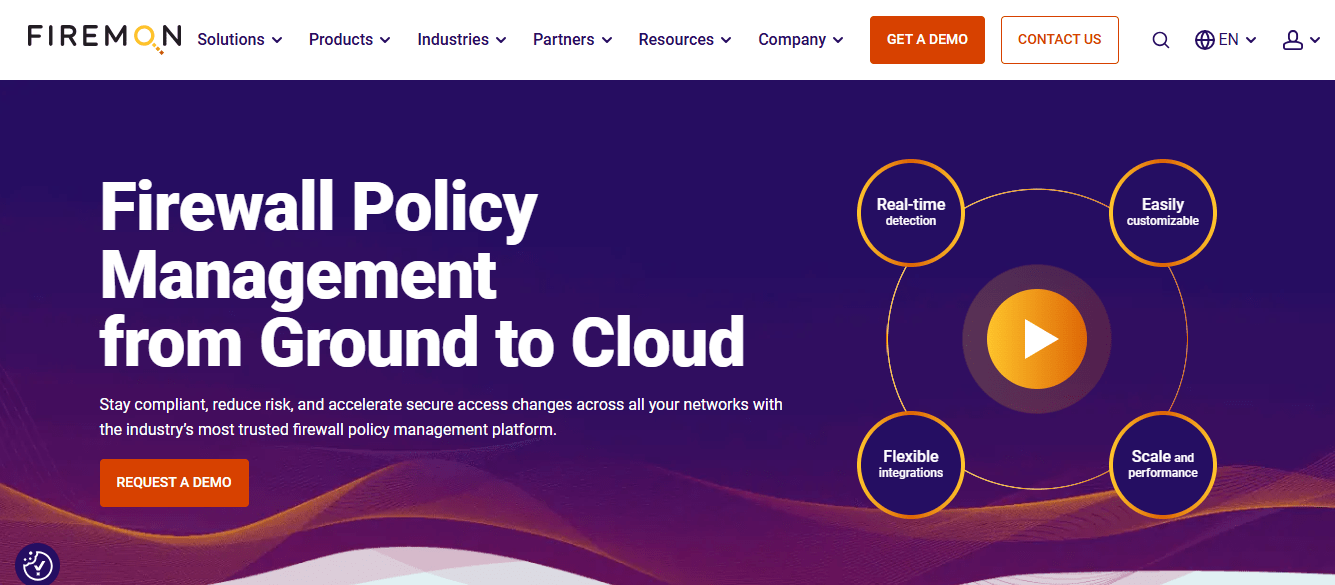
FireMon’s Asset Manager discovers and maps all network assets, building a detailed inventory. This process helps security teams identify potential attack vectors and unmanaged assets that attackers could exploit.
FireMon’s Network Security Policy Management (NSPM) solution actively optimizes firewall rules and configurations. It removes redundant or overly permissive rules, minimizing unnecessary exposure and reducing the attack surface.
Features
- Policy-Based Management: Defines security policies for discovered assets according to organizational standards and runs automated compliance checks.
- Asset Discovery: Continuously identifies and tracks both internal and external-facing assets, ensuring full visibility of the attack surface.
- Prioritization and Mitigation: Ranks vulnerabilities based on business impact, enabling teams to fix the most critical risks first.
- Network Path Analysis: Shows how attackers could potentially reach key assets, helping teams design effective defenses.
Pros
- Simple and intuitive interface
- Historical log capability helps track changes over time
- Monitors and records firewall rule changes
- Quickly identifies misconfigurations
Cons
- Customer support and documentation need improvement
- Initial setup is complex and slows implementation
Pricing
FireMon does not publish pricing details. You can request a custom quote and schedule a demo to explore the platform’s capabilities.
11. IBM Randori
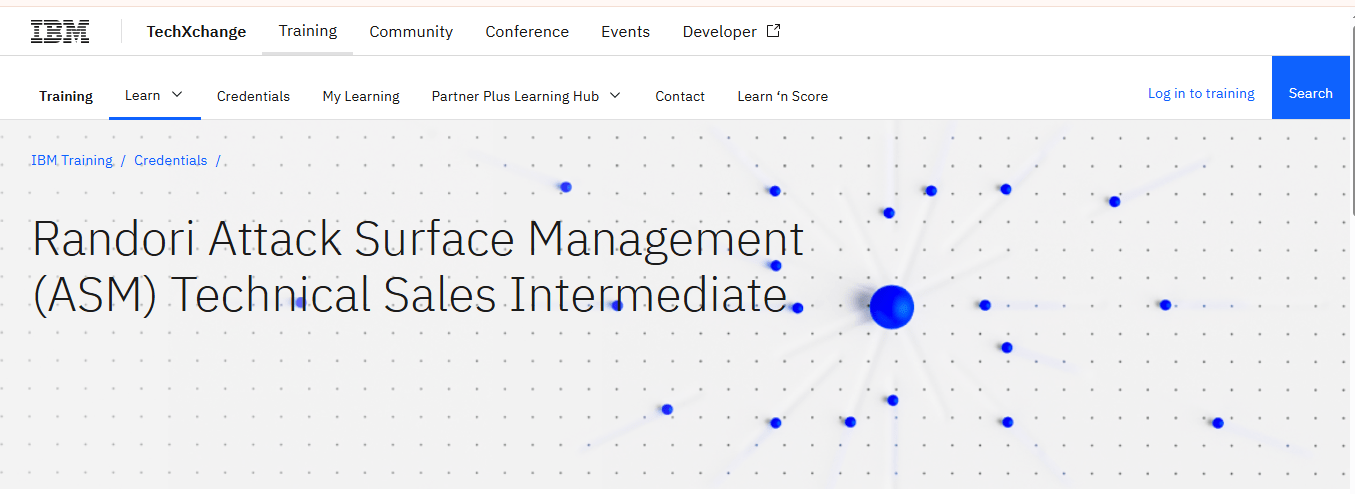
IBM’s Randori maps your external attack surface. It performs brand domain checks, monitors infiltration points, and searches for global IP blocks and domain records. The tool detects new subdomains and exposed services, then ranks them based on adversary interest. This approach highlights weak areas attackers may exploit and connects findings with IBM’s other security solutions to improve incident correlation and response.
Features
- Detect Shadow IT: Identifies forgotten assets, blind spots, and process failures that could expose vulnerabilities.
- Notifications: Sends alerts about new vulnerabilities, misconfigurations, outdated pages, and risky new applications.
- Continuous Automated Red Teaming: Assesses risks in people, processes, and technology for opportunistic, social, and zero-day attacks.
- Validate Security Investments: Tests the effectiveness of SIEM, EDR, SOAR, threat intelligence, and MDR solutions.
Pros
- Continuous, automated red teaming
- Strong shadow IT discovery capabilities
- Comprehensive attack surface visibility
Cons
- Steep learning curve for new users
- Interface navigation could be more user-friendly
Pricing
- Contact vendor for a demo and pricing details.
12. Cymulate
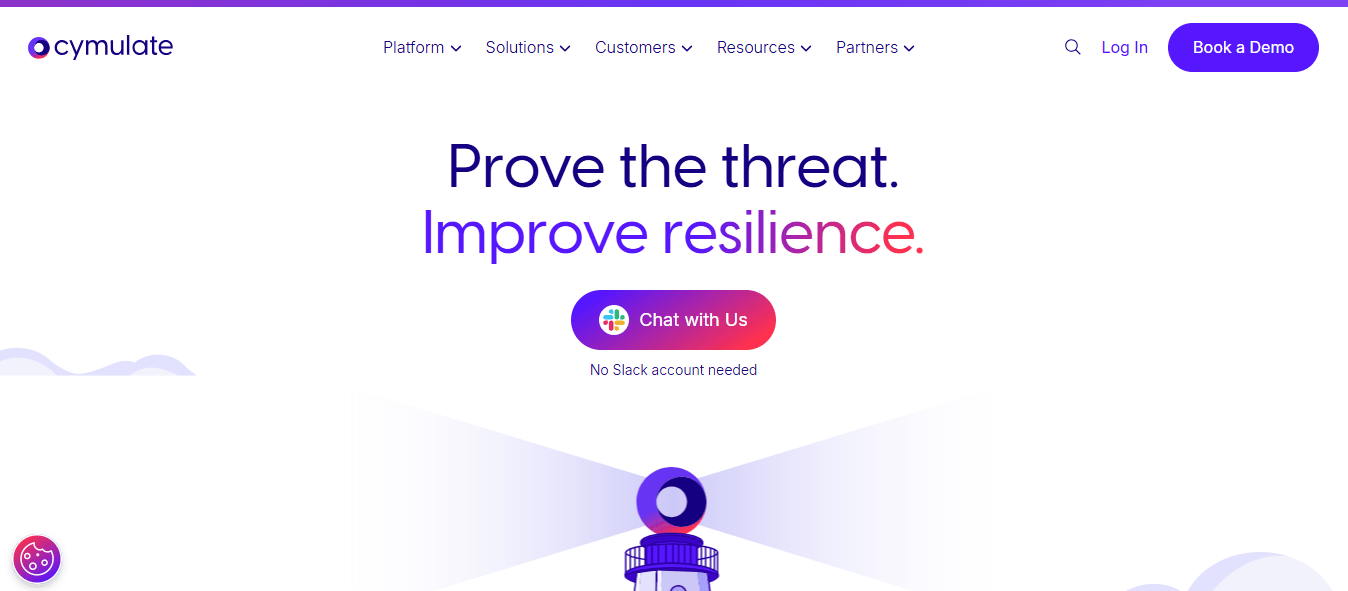
Cymulate’s cybersecurity platform helps organizations test and improve their security posture through automated attack simulations. Its attack surface management solution discovers external assets and scans them for vulnerabilities so security teams can understand and reduce risk. Cymulate continuously tests defenses against evolving threats and provides clear guidance for action. Security teams can deploy Cymulate and run unlimited attack simulations in minutes using a single lightweight agent.
Features
- Attack Remediation: Prioritizes fixes based on vulnerabilities that attackers could exploit.
- Endpoint Security: Detects and blocks endpoint threats, including ransomware and worms.
- Data Exfiltration Protection: Ensures sensitive company data cannot be stolen.
- Full Kill Chain APT Testing: Validates defenses against advanced persistent threat (APT) scenarios, including Fin8, APT38, Lazarus, and custom simulations.
- Email Gateway Testing: Tests security against thousands of malicious email formats, attachments, and links.
Pros
- Provides strong resources for cyber risk assessments and penetration testing.
- Quick and simple to set up and start using.
- Delivers instant threat alerts.
- Offers both signature-based and behavioral-based endpoint protection.
Cons
- Some users find the scanning capability could be improved.
- Needs more integrations with other security tools.
- Reporting features could be better
Pricing
Cymulate offers a 14-day free trial, and interested buyers can request a product demo.
13. Cortex by Palo Alto Networks
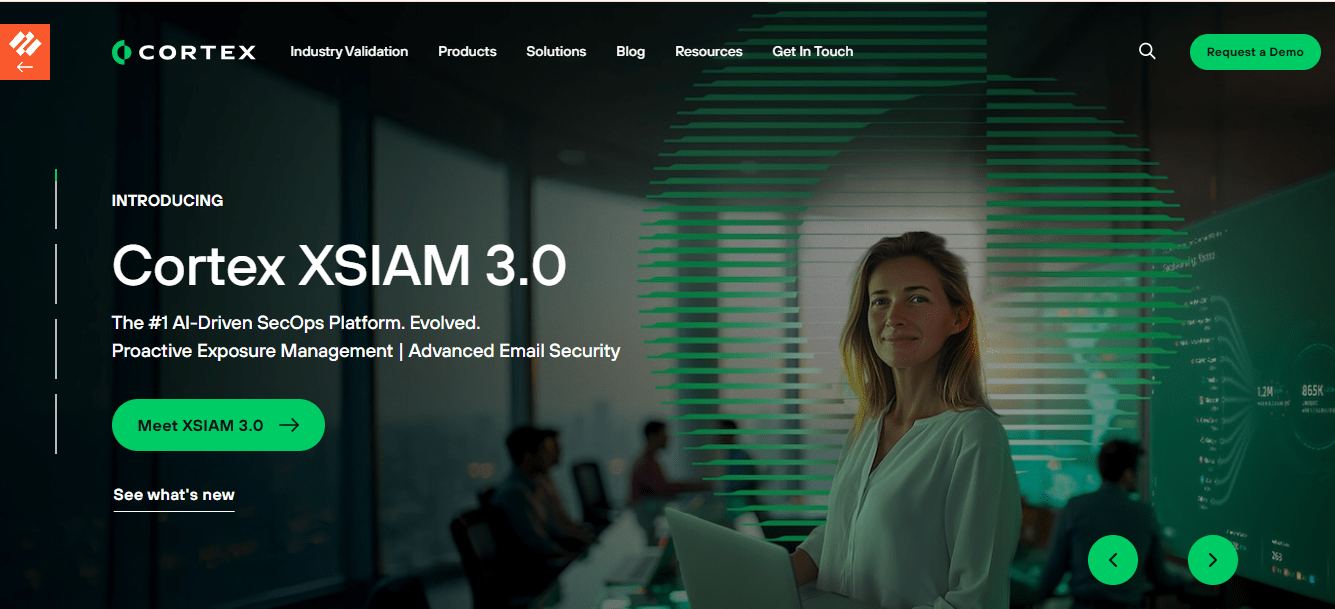
Cortex by Palo Alto Networks reduces risk by actively assessing supply chain security, managing cloud security, and addressing vulnerabilities. It protects organizations against remote access security issues, unpatched systems, insecure file sharing, sensitive business applications, IT portals, weak encryption, and exposed IoT devices. Cortex Xpanse collects data from domain registrars, DNS records, and business databases to find and identify all internet-facing assets. It builds a detailed inventory of online assets and uncovers unknown ones without requiring installation or setup.
Features
Discovers and monitors external assets, updating them continuously to maintain visibility.
Identifies risks using Palo Alto Networks’ threat intelligence and prioritizes them for response.
Uses AI and machine learning to analyze the attack surface and predict potential vulnerabilities.
Enterprise-Grade Security Architecture: Supports large organizations and adapts to business growth
Pros
Comprehensive Visibility: Offers deep visibility into vulnerabilities, assets, and accounts, helping detect unknown risks and blind spots.
Effective Prioritization: Provides actionable insights into risk severity and likelihood of exploitation.
Rich Context: Uses Palo Alto’s global threat intelligence network to enhance detection accuracy.
Cons
Limited Third-Party Integrations: Works best within the Palo Alto ecosystem, but offers fewer connections with external vendors.
Pricing
Available by request, contact Palo Alto Networks for a demo.
14. SentinelOne Singularity
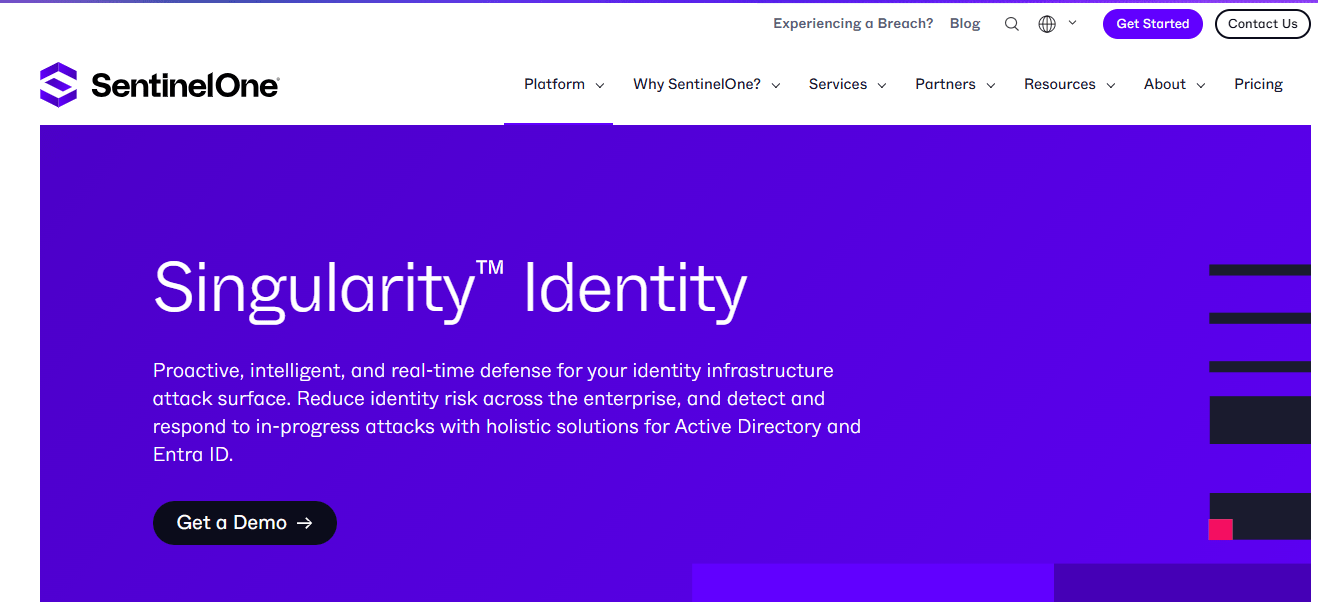
SentinelOne Singularity is an advanced attack surface management platform that combines AI-driven threat detection with full visibility into an organization’s digital assets. It monitors services and tools in real time, detects vulnerabilities, and protects digital footprints from potential attacks. Its rapid response capabilities reduce the likelihood of undetected vulnerabilities escalating into major security incidents, making it an excellent choice for enterprises that prioritize robust ASM.
Features
- AI-Powered Threat Detection: Continuously detects and mitigates threats using AI, keeping enterprise data secure.
- Automated Asset Discovery: Actively scans for new assets to ensure every digital property is monitored and protected.
- Integrated Endpoint Protection: Combines attack surface management with endpoint detection and response for centralized security control.
Pros
- Advanced AI-driven protection: Uses machine learning to detect and respond to both known and unknown threats.
- Unified platform: Brings endpoint, cloud, and identity protection together in one platform, giving security teams a complete view of their organization’s risk posture.
- Automated response capabilities: Responds to threats autonomously, containing and remediating them quickly without requiring constant human oversight.
- Detailed forensics and threat hunting.
Cons
- Potential for False Positives: May occasionally flag benign activity as malicious, especially in unique IT environments, requiring fine-tuning of detection settings.
- Network Performance Impact.
Cyberattacks are growing more sophisticated, and the digital attack surface is expanding faster than ever. Organizations can’t afford to operate without full visibility into their external-facing assets. The 14 attack surface management vendors we reviewed offer unique strengths and capabilities to secure a better cyber infrastructure. Investing in attack surface management strengthens your organization’s security, improves business agility, supports regulatory compliance, and builds stakeholder confidence.

